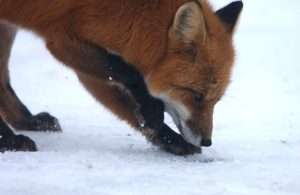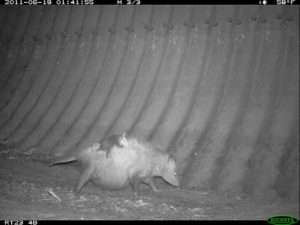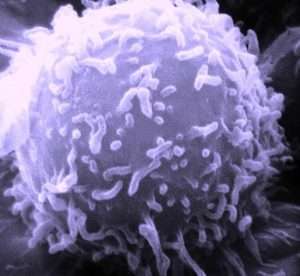 I will be the first to admit that a lot of philosophy tends to bend my brain in ways that I’m really not prepared for. I’m a very earthy creature, and I am more comfortable in physical, solid spaces than in abstract conceptualizations. Even the modalities of psychology I gravitated toward in grad school tended to be based in our interactions with physical nature, and measurable effects thereof. But it was a casual discussion on philosophy with regards to the awareness of animals that introduced me to the concept of umwelt.
I will be the first to admit that a lot of philosophy tends to bend my brain in ways that I’m really not prepared for. I’m a very earthy creature, and I am more comfortable in physical, solid spaces than in abstract conceptualizations. Even the modalities of psychology I gravitated toward in grad school tended to be based in our interactions with physical nature, and measurable effects thereof. But it was a casual discussion on philosophy with regards to the awareness of animals that introduced me to the concept of umwelt.
What is Umwelt?
Originally coined by biologist Jakob Johann Freiherr von Uexküll, umwelt describes the unique way in which a given animal experiences the world around it. Uexküll looked at how various beings take in information through their senses; the way that a blind, deaf worm engages with their environment through taste and touch is very different from how we with our hearing and color vision connect with our world. Even when I am walking with my dog out in the woods, her interpretation of what’s going on around us is going to be much more heavily influenced by hearing, and especially smell, than my sight-heavy approach. (And when we engage with each other, our respective umwelten create a semiosphere!)
So umwelt is essentially the sum total of all the ways in which an animal takes in that sensory information and attaches meaning to each fragment thereof. It’s how they tell the story of the world around them, and understand their place in it. And they rank the signs according to importance; umwelt is more strongly formed by things that are of particular interest to the animal.
That means that umwelt, rather than being constant throughout life, is always shifting according to new sensory input, or changes in how the senses work; as my dog gets older, her hearing and vision may not be as good as they were, but if her nose stays sharp then smells may become an even more important part of how she navigates her world.
 Or look at a Virginia opossum (Didelphis virginiana), which is born as a blind, deaf little hairless being with two front legs that they use to crawl to the mother’s abdominal pouch. At that time their umwelt centers on seeking and retaining the warmth of their mother’s pouch, and the sensation of the constant flow of warm, nourishing milk. After about ten weeks they leave the pouch as a miniature furry little possum and travel on their mother’s back while learning to walk; their umwelt has expanded quite a bit to include the sight and smell of their mother, the visual and scent cues that tell them how close they are to known food sources, and visual, sound, and audio information warning of various dangers. At around five months, the opossum becomes independent, and their mother fades from their umwelt while being replaced by an even larger network of food, danger, and perhaps even potential mates. Over a lifetime, as the opossum’s senses develop (and, with age, decline) and their priorities shift, so does their umwelt evolve with them.
Or look at a Virginia opossum (Didelphis virginiana), which is born as a blind, deaf little hairless being with two front legs that they use to crawl to the mother’s abdominal pouch. At that time their umwelt centers on seeking and retaining the warmth of their mother’s pouch, and the sensation of the constant flow of warm, nourishing milk. After about ten weeks they leave the pouch as a miniature furry little possum and travel on their mother’s back while learning to walk; their umwelt has expanded quite a bit to include the sight and smell of their mother, the visual and scent cues that tell them how close they are to known food sources, and visual, sound, and audio information warning of various dangers. At around five months, the opossum becomes independent, and their mother fades from their umwelt while being replaced by an even larger network of food, danger, and perhaps even potential mates. Over a lifetime, as the opossum’s senses develop (and, with age, decline) and their priorities shift, so does their umwelt evolve with them.
Umwelt and Biosemiotics
This then led me into a bit of a rabbit hole with biosemiotics. Semiotics is the study of symbols and the communication of meaning, to include communication with the self. Biosemiotics, then, is how non-human beings assign meaning to various things in their lives, and interpret the world they live in. Zoosemiotics specifically refers to the semiotics of animals, like the examples I’ve given so far, while endosemiotics (aka phytosemiotics or vegetative semiotics) is semiotics at a cellular or even molecular level.
 One example of endosemiotics can be found in our immune systems. A B lymphocyte can recognize an invader such as a virus or bacteria, and it sends out a signal (an antigen) to T lymphocytes that then attack the invader. The B lymphocyte’s umwelt consists of information received through surface receptors that can detect certain proteins and other molecules, and the response it’s programmed to have as a result of detecting an invader. The T lymphocyte’s umwelt, on the other hand, centers on the B lymphocyte’s antigen signal, as well as the invader itself.
One example of endosemiotics can be found in our immune systems. A B lymphocyte can recognize an invader such as a virus or bacteria, and it sends out a signal (an antigen) to T lymphocytes that then attack the invader. The B lymphocyte’s umwelt consists of information received through surface receptors that can detect certain proteins and other molecules, and the response it’s programmed to have as a result of detecting an invader. The T lymphocyte’s umwelt, on the other hand, centers on the B lymphocyte’s antigen signal, as well as the invader itself.
Biosemiotics is important because it moves meaning-making beyond humans, demonstrating that we are not the only beings who assign more importance to one part of our world than another. It promotes the idea that human language is not necessary for an organism to be able to find meaning in their environment. I’m cautious about anthropomorphization–assigning human traits to non-human beings–but biosemiotics allows each being to be its own unique self, rather than being gauged by human standards.
A Good Point of View
It’s all too easy for me to get overwhelmed by just how technical some of the discussion over biosemiotics can get (especially when delving into the “semotics” part of it!) But my takeaway is that it’s nice to have a term–umwelt–that encapsulates the unique experience that every animal, plant, fungus, slime mold, and other being has, no matter how large or small its world may be.
I can envision millions upon millions of overlapping umwelten in every ecosystem, becoming semiospheres whenever two or more of those umwelten nudge, slide, or crash into each other. I’m already delighted by knowing that I myself contain several ecosystems, with microbiomes in my organs and on my skin and more. But I can now also consider the umwelten and semiospheres of the lymphocytes in my immune system, along with all the other cells that are carrying on their existences within my various tissues, fluids, and so forth.
Of course, this gets into discussions of whether umwelt requires some level of consciousness, the nature of consciousness, sentience vs. sapience, etc., etc., all of which are the sort of headache-inducing philosophical discussions that I try to avoid at this stage of my life. So I can understand that this whole umwelt-biosemiotics thing is still being hammered out and explored and critiqued, but also use it to augment my own personal model of my world, internal and external (my innenwelt!) And for now, umwelt is a perfectly good shorthand for “the unique way in which an organism experiences its environment.”

Nicely said , Rebecca! It has always fascinated me how no two living organisms are having the same experience of their life, how two people side by side have a different experience of a sunset, because all of those sensory experiences are filtered through the needs, wants, goals etc. of the experiencer. Thanks!
Thank you; I’m glad you enjoyed this! I am a big proponent of trying to break out of one’s own headspace to imagine what it might be like to walk in someone else’s footprints/pawprints/etc. We can always use more empathy, and I think the concept of umwelt is a fabulous way of fostering it.
Haha, you got to the part about the headache inducing philosophical discussions about consciousness and those are the ones I love! I was already going to comment about consciousness being a really important part of this. I would definitely say that some form of conscious experience would be required to assign meaning or interpret anything. In the case of things like individual cells, I think it’s more a matter of molecules performing functions that appear to our observation like conscious interpretations, but aren’t. Anyway, really interesting topic. Thanks for writing and sharing.
I’m glad you enjoyed it! I do like some discussions on consciousness, especially with regards to non-human beings, because it helps break us out of that anthropocentric way of seeing the world and allowing for other ways of approaching reality, but I don’t have a lot of patience for it getting super abstract. And I agree with cells that it’s probably not true consciousness, but I like how fundamental umwelt can gte when breaking things down to even that small a scale.